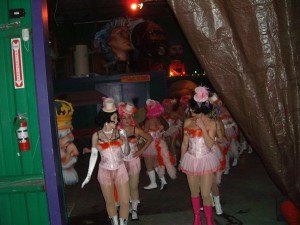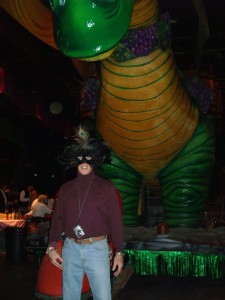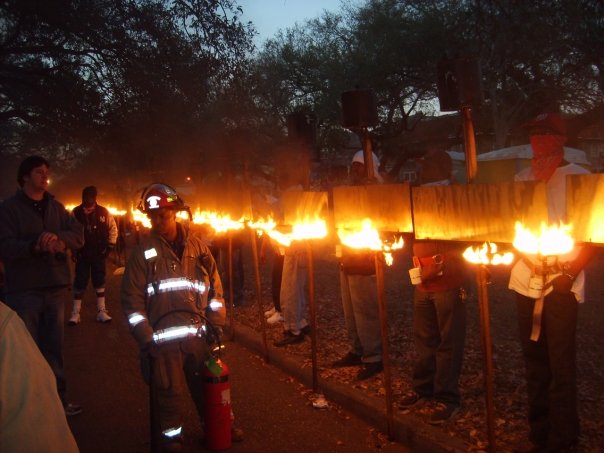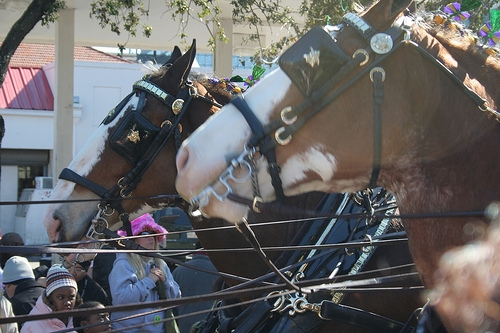Mardi Gras parade
State police will be in New Orleans for Mardi Gras
0WWL-TV Posted on January 15, 2010 at 9:44 AM
Updated Friday, Jan 15 at 11:01 A
BATON ROUGE, La. (AP) — Budget cuts will not keep the Louisiana State Police from beefing up protection in New Orleans during Mardi Grass.
State Police Superintendent Col. Michael Edmonson said on Thursday that he is taking steps to hold down overtime so that 118 troopers can be freed up to spend Carnival in New Orleans.
Edmonson says the plan he and New Orleans Police Chief Warren Riley have worked out will have uniformed officers mostly in the French Quarter and Central Business District. He says that will provide a solid presence in that area.
Edmonson says it also frees up NOPD officers for other areas.
FLAMBEAUX
0Illumination, so important to every night parade, has undergone many changes since Comus first introduced torches in their 1857 parade. Today, fiber optics, neon, and powerful Las Vegas style ‘running lights’ are growing increasing sophisticated but the old fiery flambeaux, with their golden glow, are much more appealing. Flambeaux means ‘torch’ in French.
The Richardson family first built and used flambeaux in New Orleans over one hundred years ago, although no patent was obtained until the 1930s. Momus was the first krewe to use the new flambeau in the 1870s, but they never owned their own- just rented them from other krewes.
Prior to the Richardson’s flambeaux, the krewes used hand torches, made from pine tar rags on wooden staves. Comus and Proteus first purchased the all metal flambeaux. Each club bought 400 devices, an order that has sufficed to this day. The two share a den, so all the flambeaux are now stored together. The earliest flambeau carriers were slaves and free men of color. The parade spectators would throw coins to the carriers, a tradition that continues today.
Bacchus innovated a new version of the flambeaux operating on natural gas. They burn cleaner and the units don’t suffer from the leakage problem the older liquid fuel models have. Endymion has become a big user of these newer flambeaux.
Barry Donahue is a flambeaux coordinator who hires torch carriers to help light parade routs for 3 Carnival krewes. “I need about 200 people and I’m just one (recruiter).”
Donahue, who says he has been organizing flambeaux crews for more than 20 years, said roughly half of his original labor crew has not returned since Hurricane Katrina flooded the city in 2005.
He has placed help wanted ads for “$$flambeaux carriers$$” in the Times-Picayune newspaper for at least a week with his phone number (504) 250-4462.
“In the past 6 or 7 years, we have been getting some college students,” he said. “It would be a great thing for a fraternity.”
Flambeaux organizers are not alone in the hunt for itinerant workers during the 12-day Carnival season.
Cascade Stables at Audubon Park has been advertising for “horse walkers” for several Carnival parades. See their Web site at http://www.cascadestables.net. Efforts to reach a spokesperson by phone were unsuccessful Tuesday.
Donahue says he pays flambeaux carriers about $55 per parade. However, the traditional “tips” thrown by parade spectators can swell a carrier’s pockets by an additional $300 to $600 a night, he said.
Many scoop up wads of cash.
“They don’t bother with coins anymore,” Donahue says of the itinerant workers.
Wearing a white, hooded cloak known as a “domino,” the flambeau carrier holds a rack of fuel and flame overhead like a flagpole — aided by a special belt.
A little showmanship often means more tips. So parade-goers are likely to see flambeaux carriers spinning their flaming cargo overhead, especially if there is a marching band nearby.




